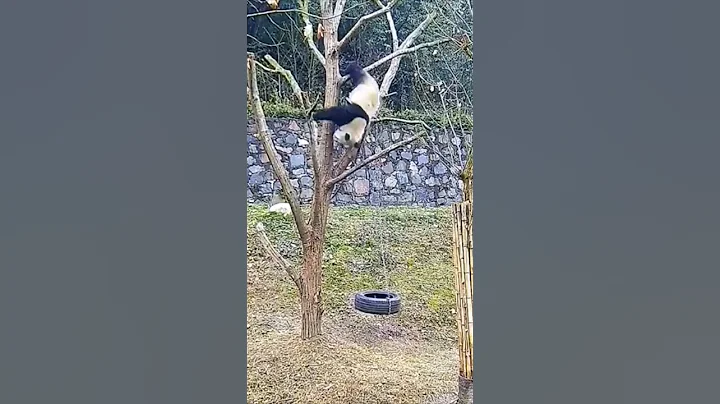Scientists from China and the United States discovered by studying the "sixth finger" fossil of early giant pandas that giant pandas prefer to eat bamboo for at least 6 million years. The results were recently published in the international journal Scientific Reports.
Unlike other mammals that have five fingers on their forelimbs, giant pandas also have a "sixth finger", which is an enlarged wrist bone at the front of its palm - the "radial sesamoid bone". It is like an extra "thumb" that allows the giant panda's palms to form a grip and grasp the bamboo.
By studying the fossils of the giant panda’s ancestor in Shuitangba, Yunnan’s Zhaotong Basin, paleontologists found that the archo-panda that existed 6 million to 7 million years ago already had a “sixth finger” and has always had a “sixth finger”. In modern times, the giant panda's "sixth finger" has not grown further.

Ecological restoration map of giant panda ancestors in Zhaotong Reservoir, Yunnan. (Illustration by Mauricio Antón, provided by the Zhaotong Institute of Cultural Relics Conservation and Archeology)
Ji Xueping, a researcher at the Kunming Institute of Zoology, Chinese Academy of Sciences, introduced that the giant panda is a special member of the bear family and has evolved into a dedicated herbivorous animal. When they use their teeth to tear the bamboo pole apart, tightly grasping the bamboo pole is the main function of the "sixth finger".

A giant panda grasps and chews bamboo. (Photo by Sharon Fisher, photo provided by Wang Xiaoming)
Research results show that unlike the human thumb, the "sixth finger" of the giant panda can move independently. It forms a complex with the first metacarpal bone and scapholunate bone by fixing the joints, and then with other metacarpal bone linkage. Although it is a passive grip, it is enough to provide the giant panda with the grip needed to eat bamboo.
"Giant pandas have not evolved a longer radial sesamoid bone, but have always retained a small, flat and rudimentary structure, just like it was specially designed to grasp bamboo to prevent the bamboo from slipping from the hand." Ji Xueping said .

Comparison of the hands of giant pandas (B, D, E), primitive bears (A) and humans (C) (Photo provided by Wang Xiaoming)
Experts said that the enlarged radial sesamoid bone is an adaptation of giant pandas to eating bamboo. Sexual evolution. The reason why the "sixth finger" is not further extended is to balance the functions of grasping the bamboo pole and bearing the weight, and to avoid the excessive radial sesamoid bone from interfering with walking. "So the 'sixth finger' has evolved to be neither too long nor too short, which is just right." Ji Xueping said.

The anatomical structure of the “sixth finger” of giant pandas (A, C) and giant panda fossils from Zhaotong, Yunnan (B, D). (Photo provided by Wang Xiaoming)
The research was jointly completed by the Institute of Vertebrate Paleontology and Paleoanthropology, Chinese Academy of Sciences, Kunming Institute of Zoology, Chinese Academy of Sciences, and the Natural History Museum of Los Angeles, USA.
source Xinhua perspective
editor Hu Decheng
process editor Liu Weili





















